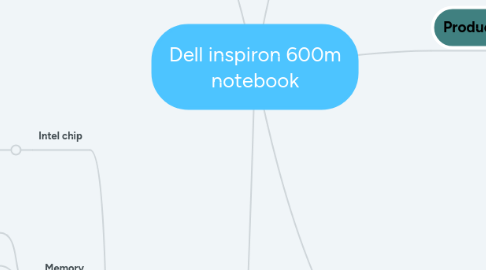
1. Parts
1.1. Intel chip
1.1.1. Intel factory
1.1.1.1. Phillippines
1.1.1.2. Costa Rica
1.1.1.3. Malaysia
1.1.1.4. China
1.2. Memory
1.2.1. Korea (Samsung)
1.2.2. Taiwan (Nanya)
1.2.3. Germany (Infenion)
1.2.4. Japan (Elpida)
1.3. Graphics
1.3.1. Taiwanese factory in China (MSI)
1.3.2. Chinese (Foxconn)
1.4. Cooling
1.4.1. Taiwan (CCI or Auras)
1.5. Motherboard
1.5.1. Korean factory in Shanghai (Samsung)
1.5.2. Taiwanese factory in Shanghai (Quanta)
1.5.3. Taiwanese factory in Taiwan (Compal or Wistron)
1.6. Keyboard
1.6.1. Japan company in Tianjin (ALS)
1.6.2. Taiwanese factory in Shenzen, China (Sunrex)
1.6.3. Taiwanese factory in Suzhou, China (Darfon)
1.7. LCD display
1.7.1. South Korea (Samsung or Lg philips lcd)
1.7.2. Japan (Toshiba or Sharp)
1.7.3. Taiwan (Chi mei optoelectronics, Hansstar display, Au optronics)
1.8. Wireless card
1.8.1. American factory in China (Agere)
1.8.2. Malaysia (Arrow)
1.8.3. Taiwanese factory (Askey or Gemtek)
1.8.4. China (USI)
1.9. Modem
1.9.1. Taiwanese company in China (Asustek or Liteon))
1.9.2. Chinese company in China (Foxconn)
1.10. Battery
1.10.1. American factory in Malaysia (Motorola)
1.10.2. Japanese factory in Mexico, Malaysia or China (Sanyo)
1.10.3. South Korea or Taiwan (Sdi or Simplo)
1.11. Hard disk drive
1.11.1. American factory in Singapore (Seagate)
1.11.2. Japanese company in Thailand (Hitachi or Fujitsu)
1.11.3. Japanese factory in Philippines (Toshiba)
1.12. CD/DVD drive
1.12.1. South Korean company in Indonesia/Philippines (Samsung)
1.12.2. Japanese factory in China/Malaysia (Teac)
1.12.3. Japanese factory in China (Sony)
1.13. Notebook carry bag
1.13.1. Irish company in China (Tenba)
1.13.2. American company in China (Targus, Samsonite or Pacific Design)
1.14. Power cord
1.14.1. British company in China, Malaysia and India (Volex)
1.15. Power adapter
1.15.1. Thai factory (Delta)
1.15.2. Taiwanese, Korean or American factory in China (Liteon, Samsung, Mobility)
1.16. Removable memory stick
1.16.1. Israeli company (M-system)
1.16.2. American company with factory in Malaysia (Smart modular)
2. Supply Chain
2.1. Demand shaping
2.1.1. Signal of shortcoming
2.1.1.1. Manipulate orders by offering other parts cheaper/ or with promotions
2.1.1.1.1. Marketing department
2.1.1.1.2. Dell.com
2.1.1.1.3. Dell operators
2.2. Just-in-time inventory bins
2.2.1. Manual assembly
2.2.2. Labelling
2.3. Conveyers
2.3.1. Burning software
2.3.1.1. Microsoft
2.3.1.2. Norton security
2.3.1.3. Other software applications
2.4. Boxing line
2.5. Shuttle box
2.5.1. Protective foam
2.5.2. Label
2.5.2.1. Order number
2.5.2.2. Tracking code
2.5.2.3. System type
2.5.2.4. Shipping code
2.6. Loading on pallet
2.6.1. Special manifest
2.6.1.1. Estimated arrival
2.6.1.2. Pallet
2.6.1.2.1. 75+ pallets, with 152 systems per pallet
2.6.1.3. Shipping adress
2.7. Transport
2.7.1. 6 days a week
2.7.2. Boeing 747
2.7.3. Each plane with 25 000 notebooks
2.7.4. 110 000 kilograms or 50 000 pounds
2.8. Larger boxing line
2.8.1. UPS delivery
3. Client order
3.1. Dell.com/Dell's 800 number
3.1.1. Dell's order management system
3.1.1.1. Personal information
3.1.1.1.1. Shipping adress
3.1.1.1.2. Billing adress
3.1.1.1.3. Credit card information
3.1.1.2. Type/Special features
3.1.1.3. Dell's production system
4. Production
4.1. Factories
4.1.1. Limerick, Ireland
4.1.2. Xiamen, China
4.1.3. Eldorado do Sul, Brazil
4.1.4. Nashville, Tennesee
4.1.5. Austin, Texas
4.1.6. Penang, Malaysia
4.2. SLC
4.2.1. Every 2 hours, delivery of parts to Dell factory, 24/7
4.2.1.1. 90 minutes to deliver them
4.2.1.1.1. 30 min to unload
4.2.1.1.2. Register the parts
4.2.1.1.3. Put in bins for assembly
4.2.1.1.4. Tracked by system
4.3. 140 000 to 150 000 computers
5. Design
5.1. Codesigned in Austin, Texas and Taiwan
5.1.1. Dell engineers
5.1.2. Taiwanese notebook designers
5.2. Preferences
5.2.1. Customer's needs
5.2.2. Requiren technologies
5.2.3. Design inovations
5.2.4. Determined by direct contact with customers
5.3. ODM, Taiwan
5.3.1. 24/7h development cycle
5.4. Redesigned every 12 months
5.4.1. New updates added through the year
